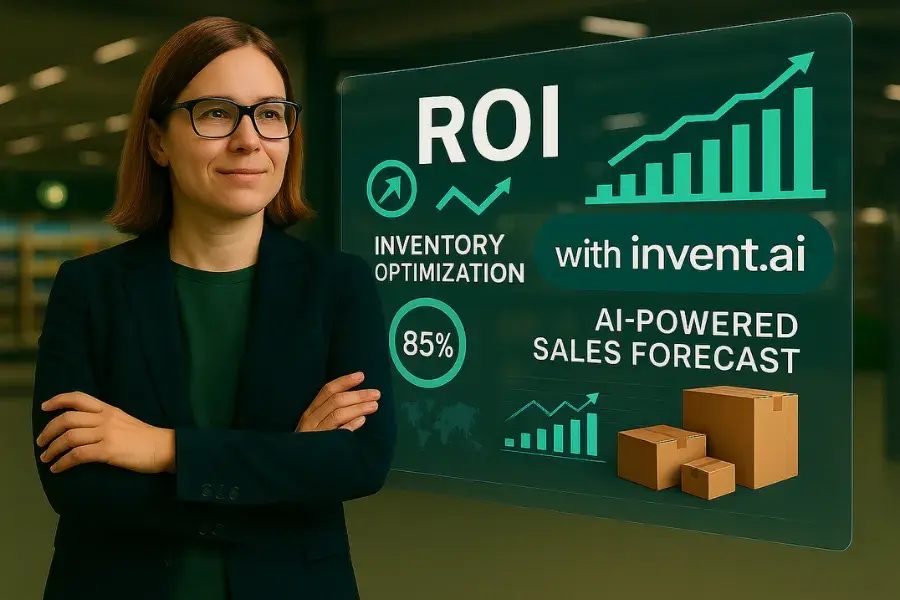Delays in retail decision-making impede growth and sales. Operational inefficiencies can bog down processes. Combined with mounting customer demand, the ability to scale effectively and adapt to changing market demands is essential to staying in business. Retailers are constantly seeking ways to streamline their operations, enhance customer satisfaction and improve margin for both short-term and long-term outlooks. There is a viable solution to these issues–agentic AI.
Solutions to process optimization and improved revenue are part of the benefits of a retail agentic AI architecture. And AI-driven productivity gains are booming. As shared by PwC, "AI could contribute up to $15.7 trillion to the global economy in 2030, more than the current output of China and India combined. Of this, $6.6 trillion is likely to come from increased productivity." Agentic AI is a powerful tool that enables autonomous decision-making and has the potential to transform retail operations through both tangible and somewhat less tangible productivity gains. Here’s what you need to know about managing its ROI.
The challenges (and opportunities) of retail decision-making
Retail processes frequently suffer from inefficiencies that can significantly affect profitability. These issues often stem from manual inventory checks and outdated logistics systems, leading to increased costs and delayed services.
For example, many retailers still rely on manual replenishment and reordering, which is not only time-consuming but also prone to errors. By implementing AI-driven solutions, these repetitive tasks can be automated. Together, AI-enabled decision-making enhances both operational efficiency and customer satisfaction by ensuring products are where they need to be when the customer wants them, at the right price. Retailers can also optimize retail assortment to better meet consumer demands.
 Retailers also face challenges when it comes to scaling operations to meet growing consumer demands. Traditional systems often lack the flexibility needed to respond quickly to market changes, leaving businesses vulnerable to shifts in consumer preferences and competitor actions. Not responding fast enough to pricing changes can lead to lost sales. AI solutions offer the scalability required to manage increased demand while maintaining quality service, wrapping it all up in an intelligent monitoring platform to reduce your workload. By taking over repetitive tasks, AI allows human resources to focus on more strategic activities that drive growth. Here are a few other optimization opportunities to consider:
Retailers also face challenges when it comes to scaling operations to meet growing consumer demands. Traditional systems often lack the flexibility needed to respond quickly to market changes, leaving businesses vulnerable to shifts in consumer preferences and competitor actions. Not responding fast enough to pricing changes can lead to lost sales. AI solutions offer the scalability required to manage increased demand while maintaining quality service, wrapping it all up in an intelligent monitoring platform to reduce your workload. By taking over repetitive tasks, AI allows human resources to focus on more strategic activities that drive growth. Here are a few other optimization opportunities to consider:
- Automation of mundane tasks, such as inventory management, frees up employees to concentrate on customer engagement and strategic planning.
- Optimized logistics and supply chain processes reduce delays, ensuring that products are available when and where they are needed, enhancing customer satisfaction and loyalty.
- Centralized decision-making within a connected platform avoids issues and keeps everyone working together.
The ROI of agentic AI is all about speed and productivity
What’s the real value of AI in retail?
Speed and breadth.
One of the key advantages of AI is its ability to facilitate quick and accurate decision-making at scale. Through enhanced data analysis, AI agents provide real-time insights that help retailers make informed strategic decisions. Data-driven insights allow for prompt reactions to market trends, ensuring that retailers remain competitive. Streamlined decision-making processes eliminate bottlenecks, improving overall operational efficiency and competitiveness. One invent.ai client realized 80% more productivity from weekly team huddles alone in managing prices following the implementation.
Integrating an AI agent into retail operations creates measurable business value, boosting both financial performance and operational efficiency. Retailers leveraging autonomous decision-making are seeing substantial productivity gains, with some reports showing an average ROI of 171%—a clear signal that it’s time to measure ROI differently. Across sectors, automation is unlocking new levels of scalability and adaptability, helping teams streamline logistics, reduce friction and achieve meaningful cost savings. From supply chain optimization to frontline task automation, AI enables sharper risk management, strategic resource deployment and enhanced customer satisfaction. By implementing intelligent monitoring and reallocating labor from routine tasks to high-value work, retailers can secure a long-term competitive advantage and accelerate growth.
Let’s look at how to run those numbers.
How to measure the ROI of agentic AI in retail
The formula for calculating ROI is very simple: (net profit/cost of investment) * 100. 
But when you’re thinking about AI, you have to consider all the ways it can be applied. The way you see value may be different. For instance, seeing the ROI of its use for pricing decisioning may be slightly different from its use in managing assortment. But the math still works the same. You must operate from a financial perspective, including costs versus investment. Here are a few other ways to quickly quantify and measure ROI of agentic AI in retail without all the complex calculations:
- ROI of time spent in meetings discussing decisions. Regularly spend half your week in meetings discussing autonomous decision-making like pricing and forecasting? Exact figures vary, but you could get back 25-80% of that time, not just for you and your team, but everyone tangentially touched by the process. Fewer discussions + more engaged teams = more ROI.
- Reduced inventory carrying costs. Too much inventory at individual stores wastes capital. Ensure you have the just-right mix at each location with AI agent support. Less inventory + more sales = AI-mazing ROI.
- Increased sales associated with individual stores. The right balance of the right product, at the right location, at the right place and at the right time leads to more sales. More sales = More room for stronger ROI and business value.
- Less confusion over who is responsible for tracking data. With teams spending less time tracking down data, they can prioritize other work. In turn, that means more time to focus on other needs. Less busywork = More valuable work powered by intelligent monitoring and automation.
Get more ROI with agentic AI in retail
Retailers aiming for excellence must integrate AI solutions into their operations now. The potential for increased profitability, competitive advantage and operational efficiency is too great to ignore. And the barriers to adoption are continuing to decline, especially when you consider all the potential places you can create AI ROI in your business. Connect with the invent.ai team to embark on your journey toward growth and success in retail through the power of AI.


